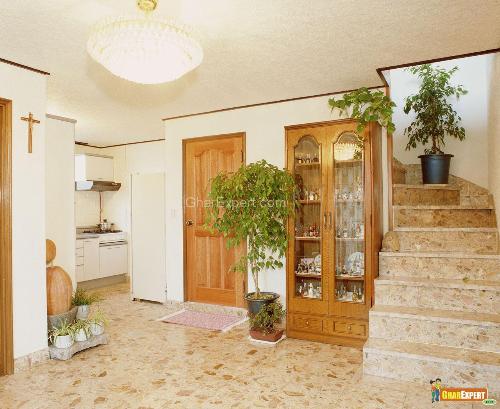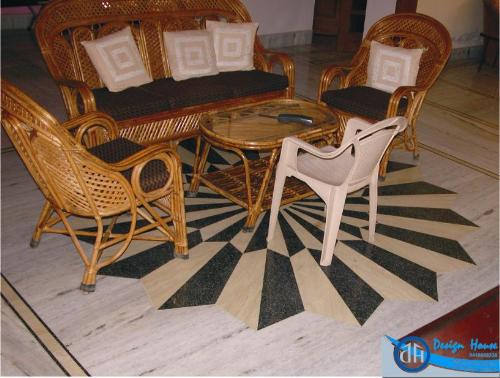Which are various types of marble for flooring ?

Marble stone is one of the highly demanded stone. It gives a very soft look and provides elegance to the modern era. Marble stone is used in architecture and sculpture. The best example of architectural heritage is Taj Mahal, which is one of the seven wonder of the World. Marble stone is a very good building material. Marble stone is widely preferred for home furniture, counterparts, marble countertops flooring, foyers, bars, tables, showers, windows and fireplaces. It is a very natural stone, easy to clean and gives you a spectacular look.


Some of the distinguished features of marble stone are as following:-
Physical Properties of Marble Stone
Marble stone shall be hard, sound, dense, and harmonized in texture with crystal in texture as far as possible. It is generally uniform in color and free from stains, cracks, decay and weathering. According to Indian standard, it should not absorb moisture more than 0.4% by weight and its stiffness should not be less than 3 where as specific gravity should not be less than 2.5.
The marble stone blocks are used in building monuments. Marble blocks are converted into marble slabs or tiles. These slabs or tiles are used for flooring, stairs, facing, dado, skirting and table tops etc.
Durability of Narble Stone
The degree of resistance of marble stone to chemical agents in the atmosphere, to heating and cooling and to the alternate cycles of freezing and thawing is a measure of its weathering ability.
Finishes of Marble Stone
Marble can be finished or polished in three ways:-
- Polished finish marble: - A mirror like glossy surface that brings out the full color and character of the marble, but it is not recommended for exterior work.
- Hone finish marble : - A velvety smooth surface with little or no gloss.
- Sand or abrasive finish marble: - A flat non-reflective surface usually recommended for exterior use. This type of finish preferred bear some small relationship to final cost since the smoother, more highly reflective surfaces require more polishing, consequently more time. The most efficient finish for exterior use is the sand or grainy finish.
Categories’ of marble Stone
The marble blocks, slabs and tiles can be classified broadly in the following two categories
A. Pure white marble
B. Different colored marble such as black, green, pink, brown, yellow and grey and so on.
Different Varieties in Marble stone
There are over 3000 varieties in marble stone available in the world market. Marble deposits are widely spread in India mainly in the states of Rajasthan, Gujarat, Madhya Pradesh and Andhra Pradesh. Rajasthan is the main depository of marble in India accounts for over 90% of total marble production of the country, with reserves spread over the districts of Nagpur, Udaipur, Rajsamand, Banswara, Dungarpur, Jaipur, Sirohi, Bhilwara, Ajmer, Bundi, Alwar, and Pali. Some popular varieties are given below:-
- Makarana Marble has sub-varieties are Kumhari, Doongri, Alberta, Chosira, Pahar Kuwan, Bhot, adanga marble, Makarana chalk, Abu white and Makarana White.

- Rajnagar Marble is the largest marble-producing area, having units located in the nearby town of Kishangarh to process the material produced. Agaria, Dolomitic, quartz is the best variety of this area.
- Andhi Marble is located near the capital city of the state of Jaipur; the varieties are pista (pistachio) marble. One of the famous varieties of this area is known as Indo-Italian, owing to its resemblance with statuario Marble. The Supreme Court of India now bans most of the mining of this famous field. The other varieties are Peta Pasu, Udaipur green and Umber (Bundi) Jaisalmer etc.
- In Gujarat, Amba Ji Marble and Baroda green marble range are widely used.
- In Madhya Pradesh, Katni Marble Range and Jabalpur range are famous for marble stone
 Italian marble is a wonderful material that can quite simply enhance the beauty and elegance of any room. However, when it comes to cleaning Italian marble flooring, often times people are left wondering what to do. Here are some basic and easy tips of cleaning Italian marble floors.
Italian marble is a wonderful material that can quite simply enhance the beauty and elegance of any room. However, when it comes to cleaning Italian marble flooring, often times people are left wondering what to do. Here are some basic and easy tips of cleaning Italian marble floors.
 Nowadays marble become to be a favorite material for kitchen countertops, sink tops, floors, and wall tiles. White marble can brings a sense of sophistication and elegance to the space. White marble is relatively soft and very easy to work with because of its refined and polished texture. Let us know the white marble in brief.
Nowadays marble become to be a favorite material for kitchen countertops, sink tops, floors, and wall tiles. White marble can brings a sense of sophistication and elegance to the space. White marble is relatively soft and very easy to work with because of its refined and polished texture. Let us know the white marble in brief.
 Marble stone is one of the common and best components for flooring. Use of marble provides a shining and impressive look to the complete structure of your home or work place. Good knowledge and useful tips will make you more comfortable while going for marble flooring. So just read on.
Marble stone is one of the common and best components for flooring. Use of marble provides a shining and impressive look to the complete structure of your home or work place. Good knowledge and useful tips will make you more comfortable while going for marble flooring. So just read on.
 Kota stone flooring is a subtle blend of grandeur and luxury giving the interior and exterior a gorgeous look.......
Kota stone flooring is a subtle blend of grandeur and luxury giving the interior and exterior a gorgeous look.......
 To get maximum ventilation and natural light in your house, make sure the building is properly oriented. Orientation of building saves energy and provides comfortable living as well. This article tells you about various factors and benefits of building orientation.
To get maximum ventilation and natural light in your house, make sure the building is properly oriented. Orientation of building saves energy and provides comfortable living as well. This article tells you about various factors and benefits of building orientation.
 Preview some of the most impressive pictures of kitchen from GharExpert Gallery.
Preview some of the most impressive pictures of kitchen from GharExpert Gallery.
 A solid roof on building is very important for everybody living in the house. The roof should be constructed in a way that assures you great safety. Here are given details about different types of roofing.
A solid roof on building is very important for everybody living in the house. The roof should be constructed in a way that assures you great safety. Here are given details about different types of roofing.
 Frames of doors and windows are most important parts of your doors and windows. They are available in different size, height, width and shapes. Frames hold locks and hinges and support door and windows to shut and open easily. Here is what you need to know about different doors and windows frames.
Frames of doors and windows are most important parts of your doors and windows. They are available in different size, height, width and shapes. Frames hold locks and hinges and support door and windows to shut and open easily. Here is what you need to know about different doors and windows frames.
 Different steel bars are recommended for their relative tensile stresses.Steel bars are major components of construction.Here is what you need to know about steel bars (Sariya).
Different steel bars are recommended for their relative tensile stresses.Steel bars are major components of construction.Here is what you need to know about steel bars (Sariya).
 Brahmasthan is a powerful zone of the house. It should have open space for flow of energy in the house. The positive energy is very useful for living beings of the occupants of the house.
Brahmasthan is a powerful zone of the house. It should have open space for flow of energy in the house. The positive energy is very useful for living beings of the occupants of the house.
 Brick work is an important part of construction work done with the help of bricks and cement mortar. It is done with different quality of bricks with different ratios of cement mortar according to the requirement.
Brick work is an important part of construction work done with the help of bricks and cement mortar. It is done with different quality of bricks with different ratios of cement mortar according to the requirement.
 Are you remodeling your bathroom? Bathroom shower doors make your bathroom a style icon. Read the following article that will help you select the bathroom shower door that will exactly suit your bathroom.
Are you remodeling your bathroom? Bathroom shower doors make your bathroom a style icon. Read the following article that will help you select the bathroom shower door that will exactly suit your bathroom.
 Living room or Drawing room should be located in east or north direction. The ideal location of a living room depends on plot facing.
Living room or Drawing room should be located in east or north direction. The ideal location of a living room depends on plot facing.
FLooring and all types of road work
FLooring and all types of road work
FLooring and all types of road work
Marble flooring, with S.S.Railling
Marble flooring, and S.S.Railling, Decorative Stairs

Marble flooring design for royal foyer

medallion marble flooring in lobby

clean marble floor design for a open lobby area

marble floor tiles pattern for a doorway

Italian marble tile flooring in living room

contemporary style kitchen with marble floor

Warm yellow lights, marble flooring in a large kitchen with island
Internal stairs with marble slab flooring

Marble flooring Design

Marble Flooring

White Marble Flooring

White Marble Flooring

Stair Design and Marble floor

Marble Floor

marble flooring

Master bedroom marble Flooring border design

Check design in Marble floor for Dining and Lobby area

Marble Flooring in Corridor

White Marble Tile Kitchen Floor

Living Room Marble Flooring

Marble Stone Floor Design for Kitchen

Marble chips flooring

Stylish Marble flooring

Marble floor grinder

marble n tile flooring....

Crazy Marble Flooring

marble rug flooring

Marble Flooring

Spacious Marble Flooring....

Bedroom with Marble Flooring

Marble Medallion Floor Design

Bedroom marble flooring
Glossy Marble Flooring with ultimate designing for lobbies

Marble Medallion Floor Design

Marble Medallion Floor Design

Attractive white painted and marble top kitchen islands

Bathroom Planning, Ceiling, Lighting, Vanity, Flooring, Bath tub and Interior

Decorative Lights in Luxrious Bedroom

modren bed room

Bathroom Interior, Flooring, Walls, Basin , Walls, Doors, Mirrors

Kitchen

Vinyl Flooring Design

Bianco Pi Marble Stone

Living room Ceiling, Lighting, LCD unit, Wall Unit, Furniture and Flooring

Perimeter Border Flooring
Contemporary living room

FLOORING

Kitchen Interior with Brown Concept
Marble Pooja Room

red colored tiles on floor in Dining room

Kids room interior, wardrobe, flooring, ceiling, furniture design

Living Room Ceiling and Flooring

kitchen flooring

Hardwood flooring with steel strips for open kitchen and living room

Flooring 3

Patio flooring

flooring
Ground Floor Elevation

Modern simple Bedroom

Elevation for Ground floor Bungalow

Bedroom Decoration and flooring

floor plan
Marble Pooja Room

ROOF N FLOOR

celling